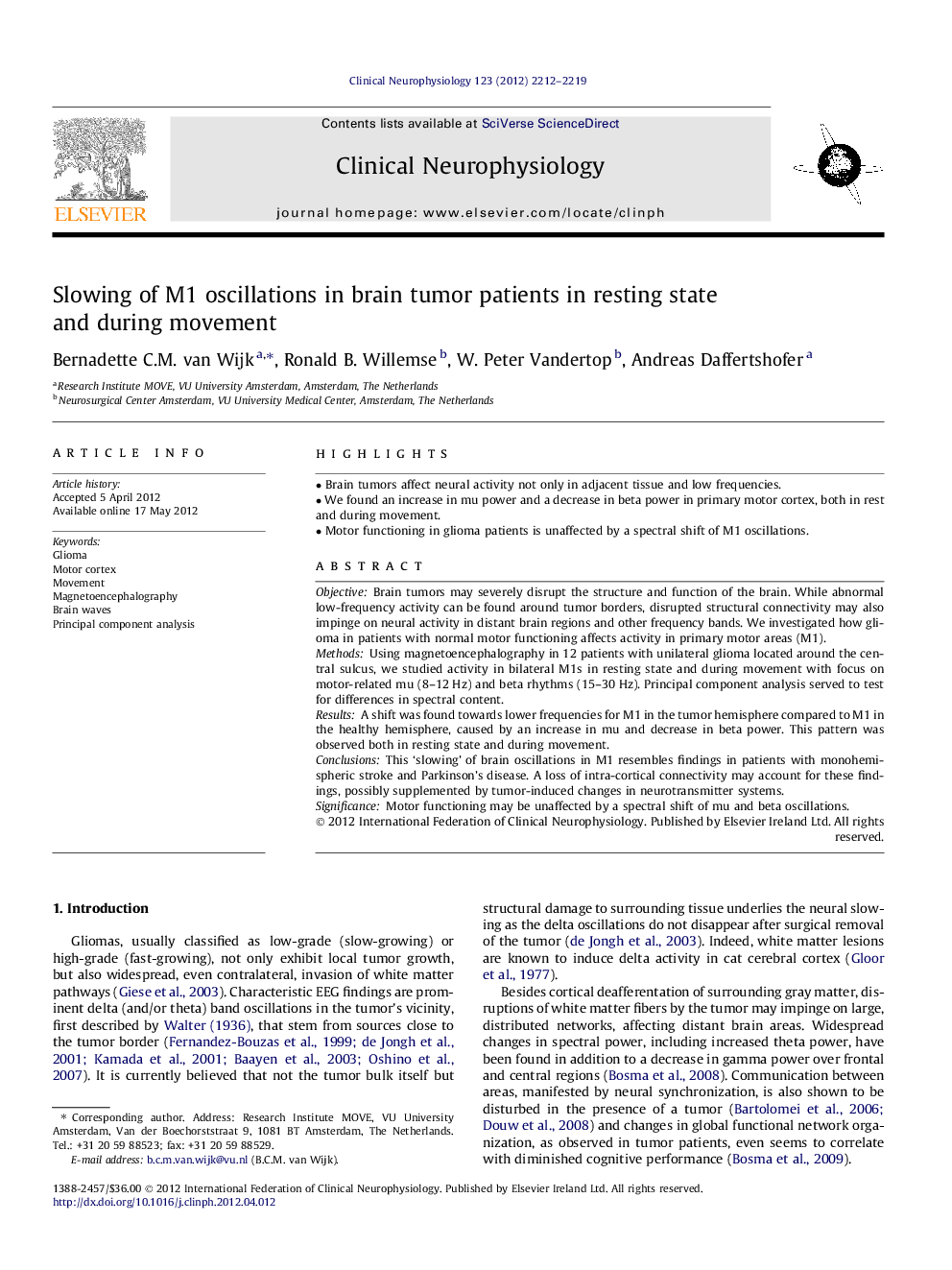| Article ID | Journal | Published Year | Pages | File Type |
|---|---|---|---|---|
| 3043111 | Clinical Neurophysiology | 2012 | 8 Pages |
ObjectiveBrain tumors may severely disrupt the structure and function of the brain. While abnormal low-frequency activity can be found around tumor borders, disrupted structural connectivity may also impinge on neural activity in distant brain regions and other frequency bands. We investigated how glioma in patients with normal motor functioning affects activity in primary motor areas (M1).MethodsUsing magnetoencephalography in 12 patients with unilateral glioma located around the central sulcus, we studied activity in bilateral M1s in resting state and during movement with focus on motor-related mu (8–12 Hz) and beta rhythms (15–30 Hz). Principal component analysis served to test for differences in spectral content.ResultsA shift was found towards lower frequencies for M1 in the tumor hemisphere compared to M1 in the healthy hemisphere, caused by an increase in mu and decrease in beta power. This pattern was observed both in resting state and during movement.ConclusionsThis ‘slowing’ of brain oscillations in M1 resembles findings in patients with monohemispheric stroke and Parkinson’s disease. A loss of intra-cortical connectivity may account for these findings, possibly supplemented by tumor-induced changes in neurotransmitter systems.SignificanceMotor functioning may be unaffected by a spectral shift of mu and beta oscillations.
► Brain tumors affect neural activity not only in adjacent tissue and low frequencies. ► We found an increase in mu power and a decrease in beta power in primary motor cortex, both in rest and during movement. ► Motor functioning in glioma patients is unaffected by a spectral shift of M1 oscillations.
